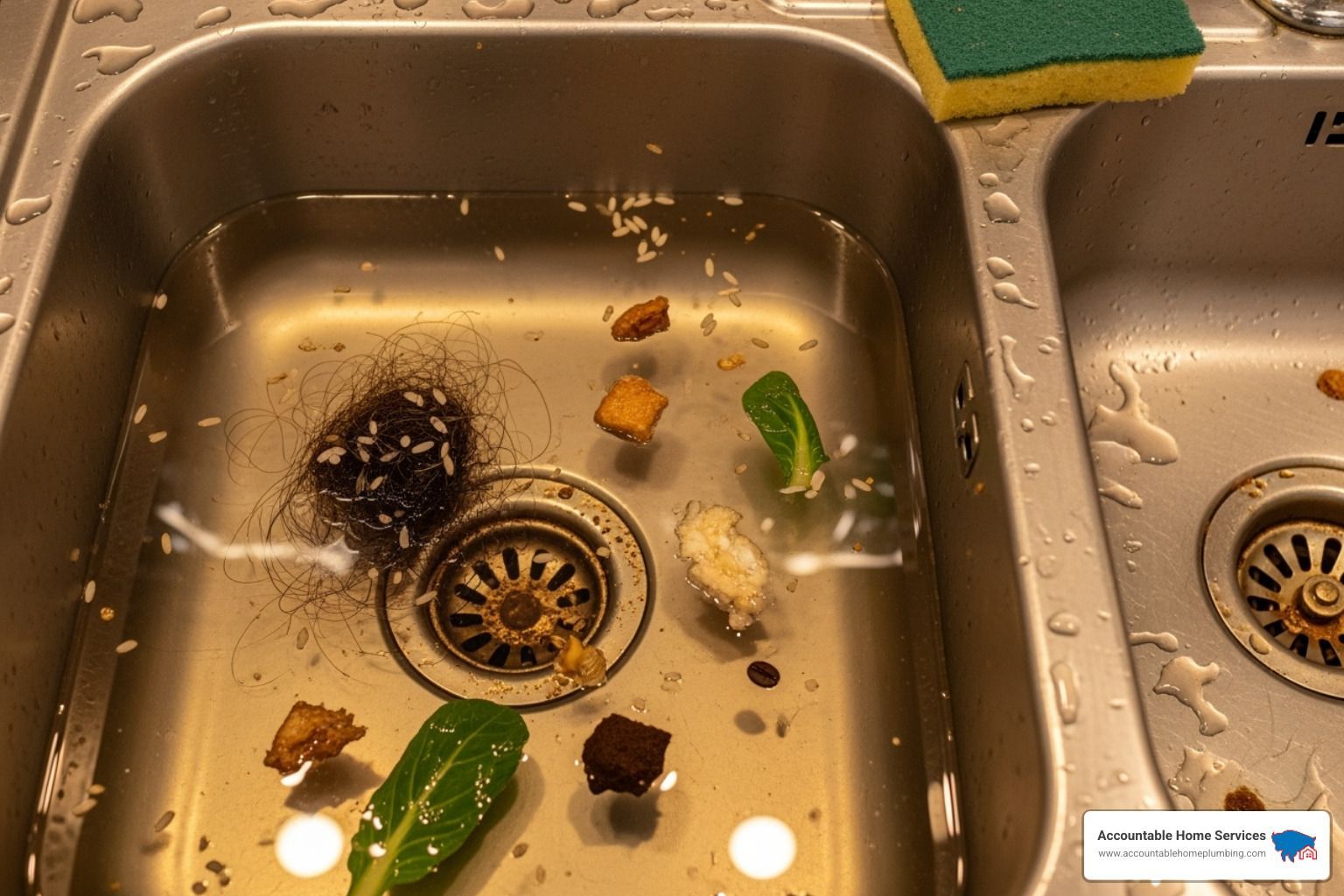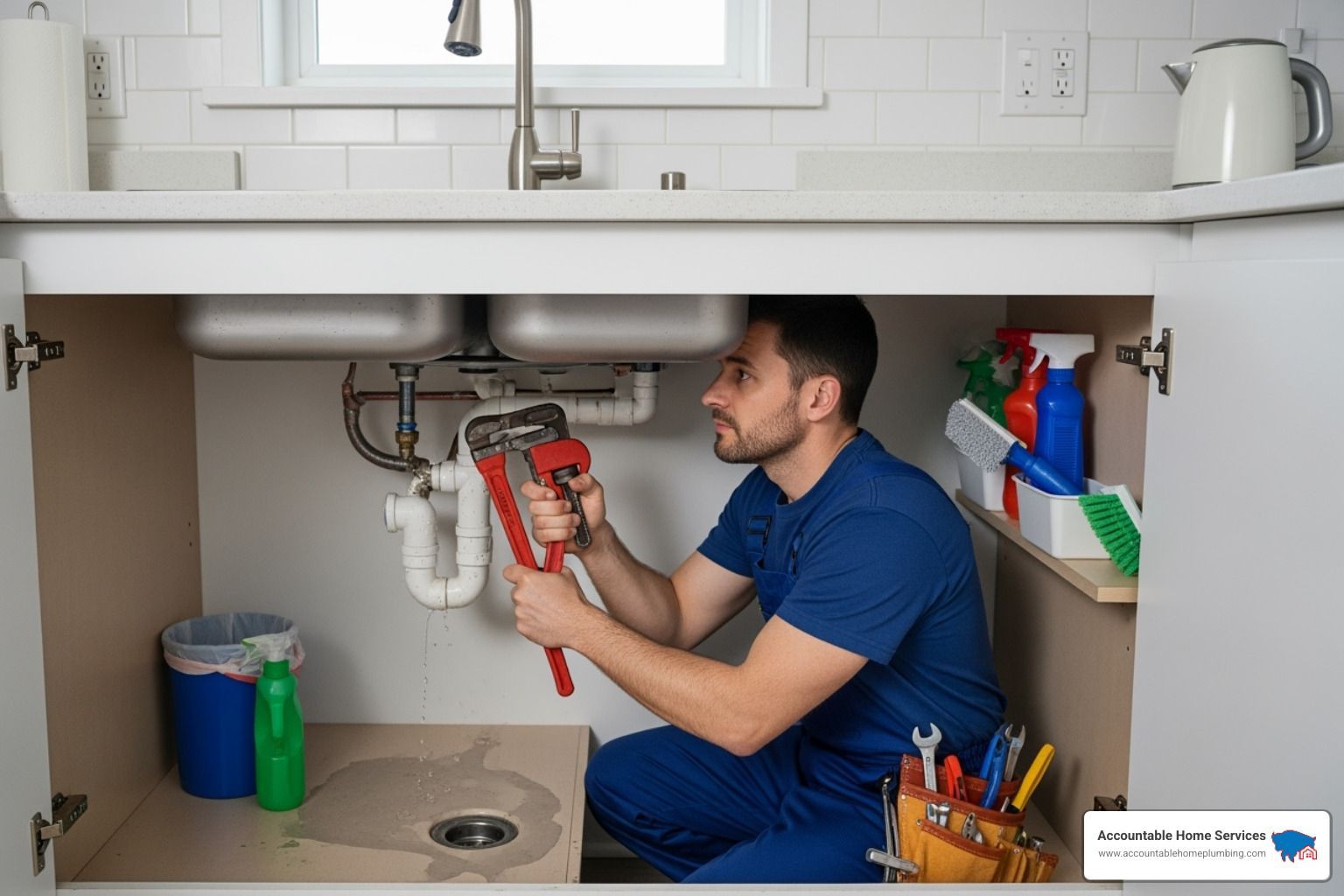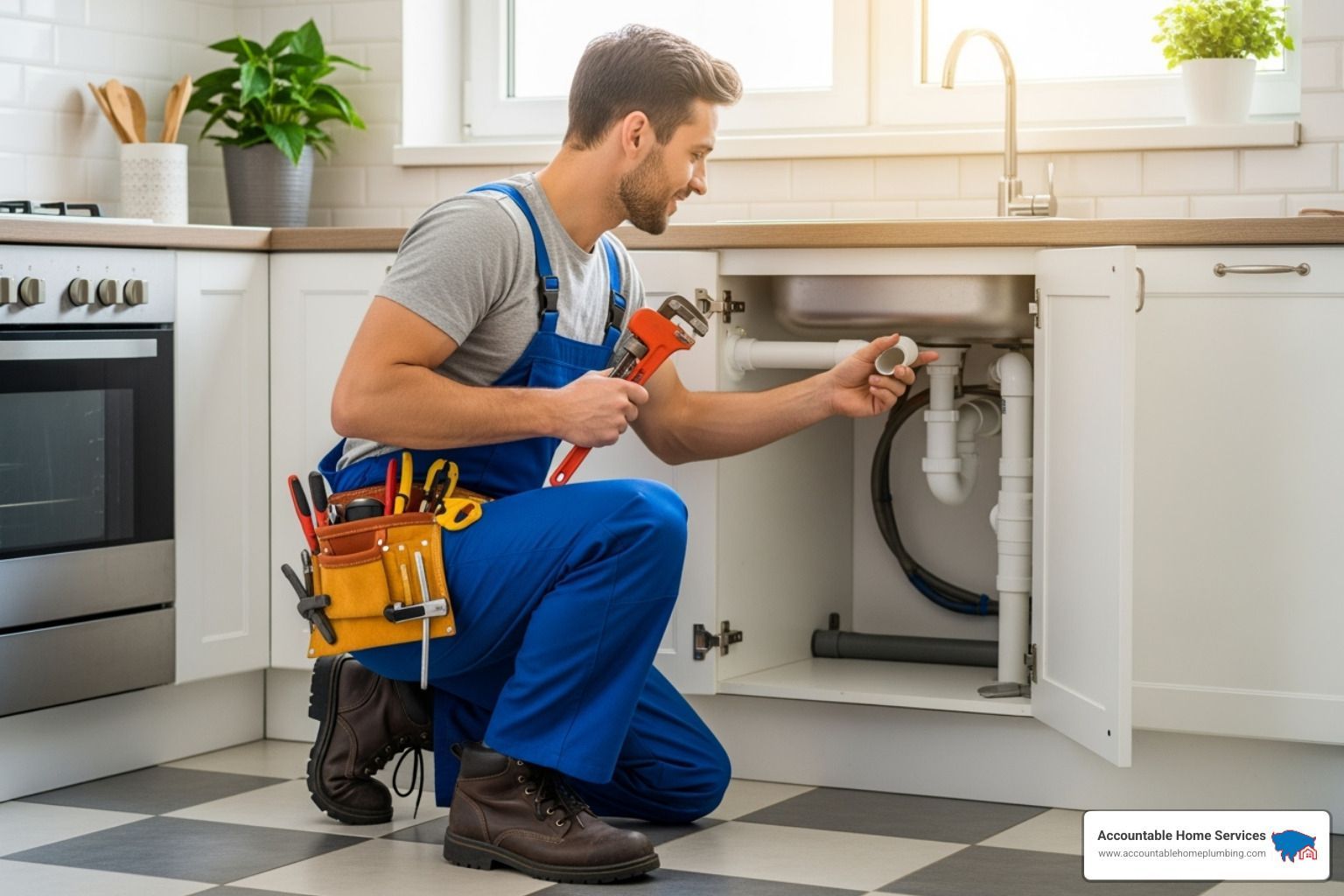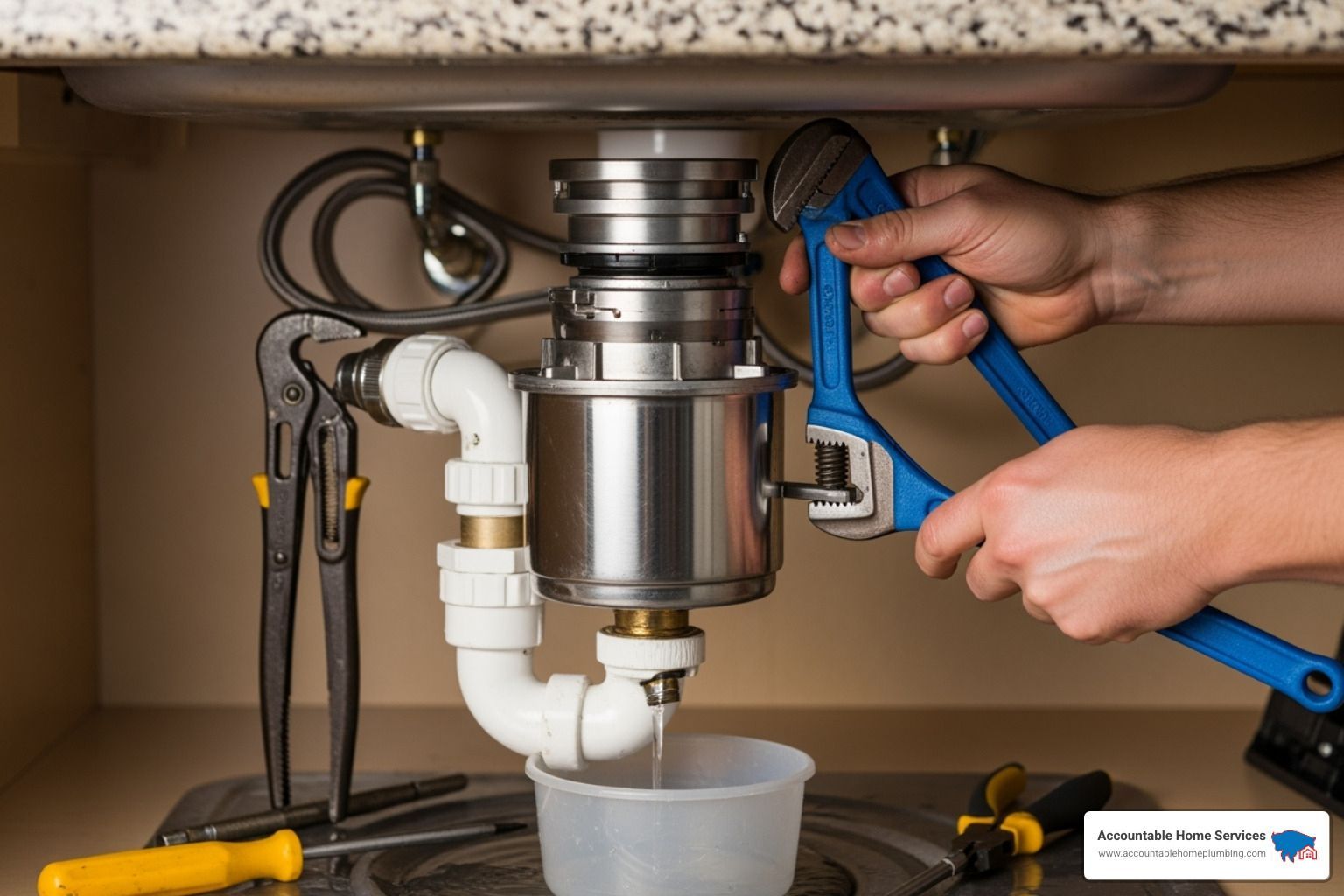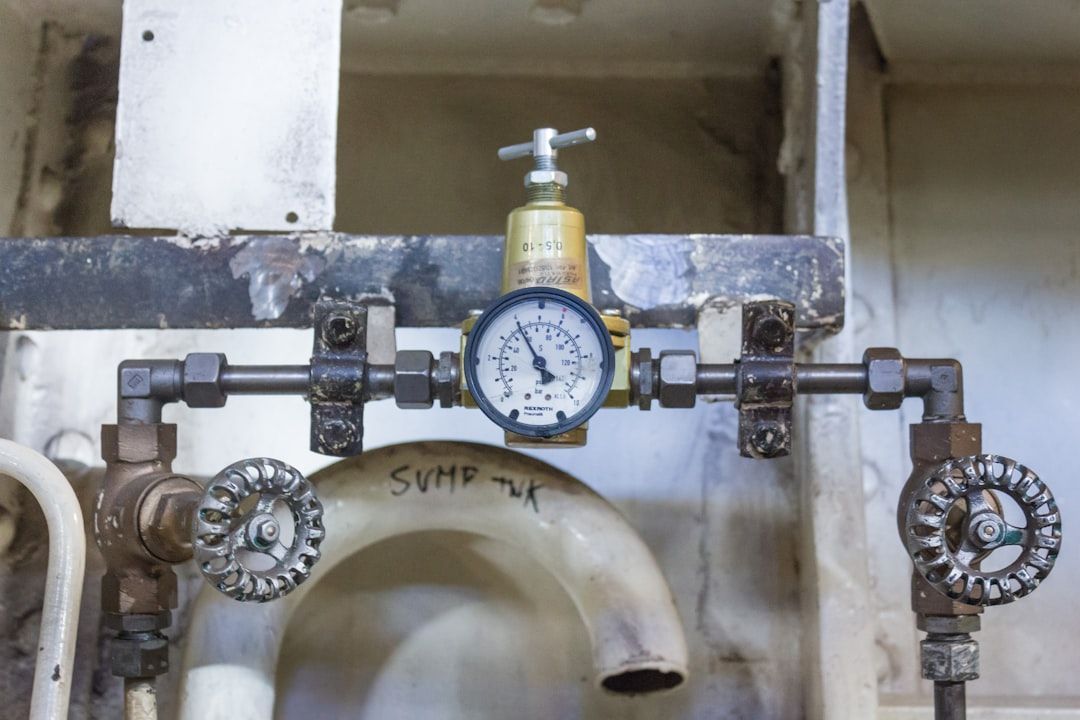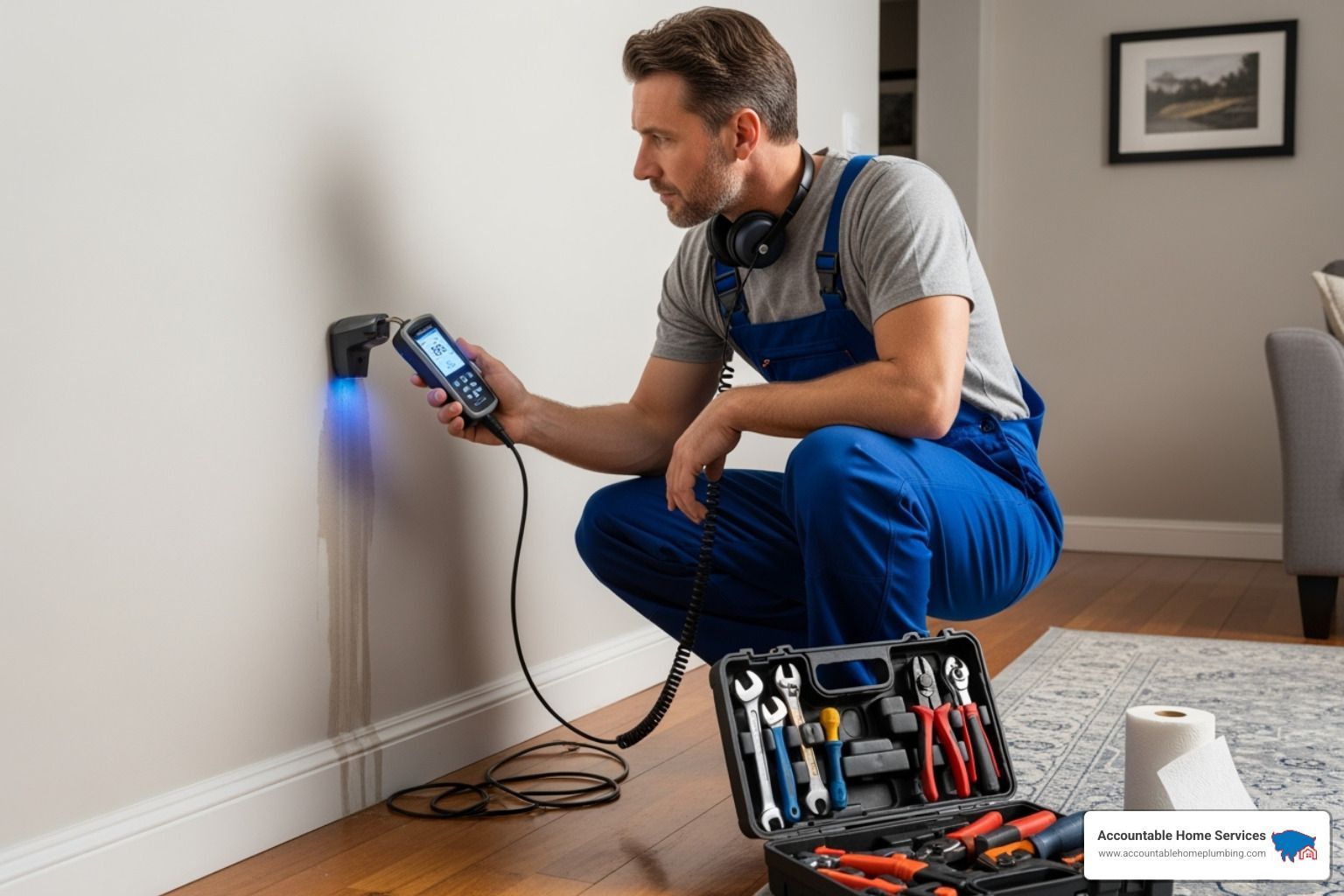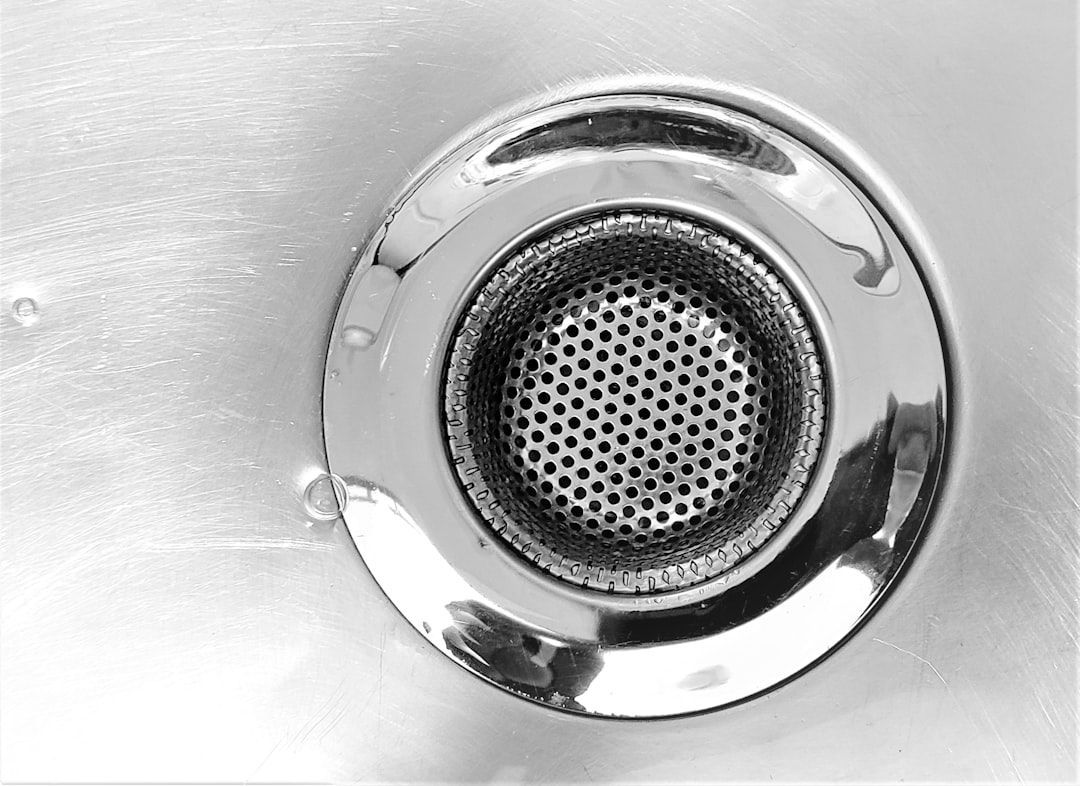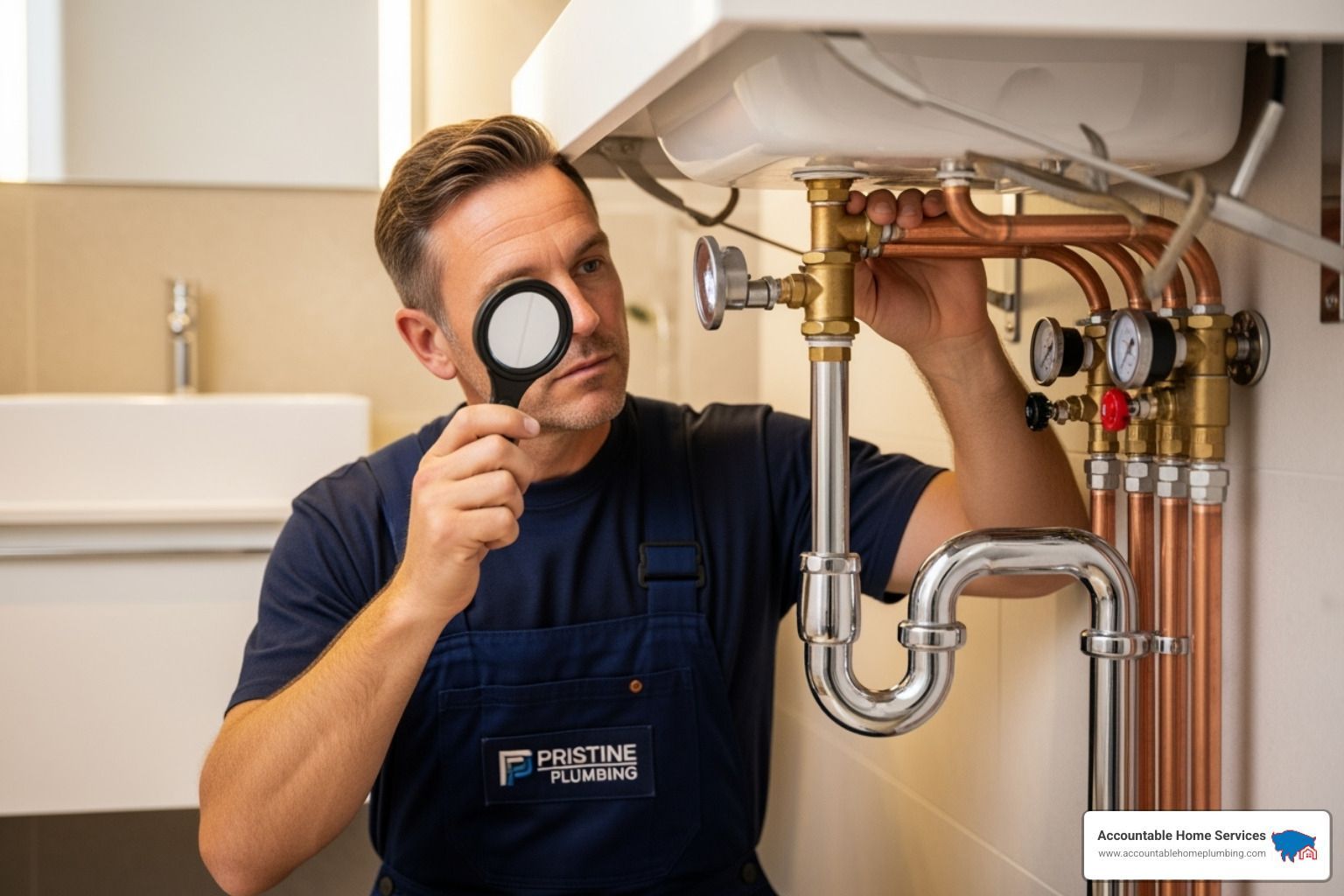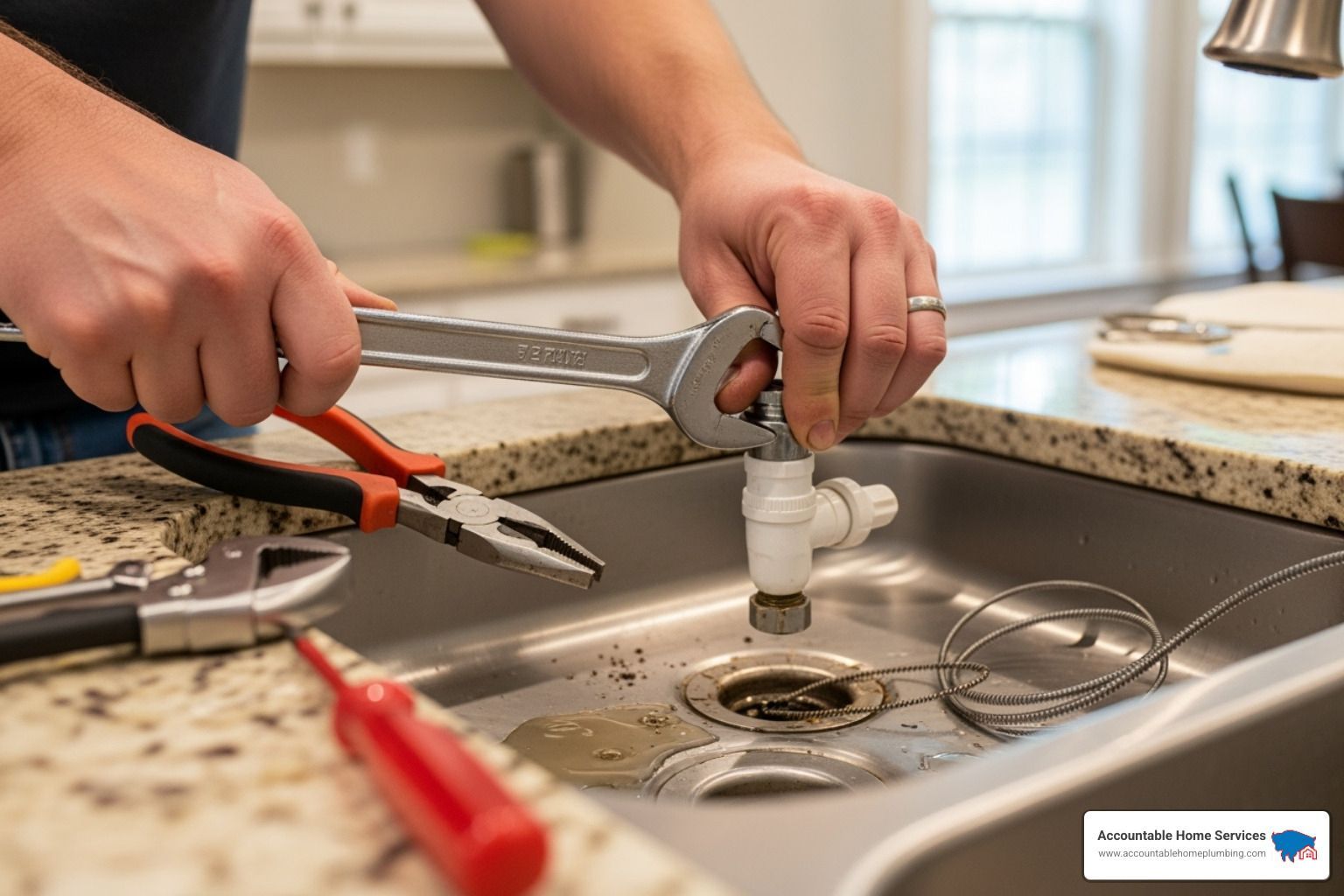How to Never Worry About Sump Pump Repair Again
The Hidden Guardian of Your Basement
Sump pump repair is something most homeowners don't think about until they're standing ankle-deep in water in their basement. For quick assistance:
Quick Guide to Sump Pump Repair:
- Check power supply - Ensure it's plugged in and breaker isn't tripped
- Inspect discharge pipe for clogs or freezing
- Test float switch by manually moving it up and down
- Clean inlet screen of debris with vinegar solution
- Call a professional if motor is humming but not pumping or making unusual noises
A properly functioning sump pump is your home's silent defender against water damage, mold growth, and structural issues. These devices work tirelessly in the lowest part of your foundation, activating automatically when water levels rise to protect your property from flooding.
Unfortunately, most homeowners only find their sump pump has failed during heavy rainstorms or spring snowmelt - precisely when they need it most. Regular maintenance can prevent most common failures, saving you thousands in potential water damage repairs.
I'm Mike Martinez, owner of Accountable Home Plumbing, with over 15 years of experience handling sump pump repair throughout the Denver metro area. I've seen how proper maintenance and timely repairs can prevent the devastation of basement flooding and give homeowners lasting peace of mind.
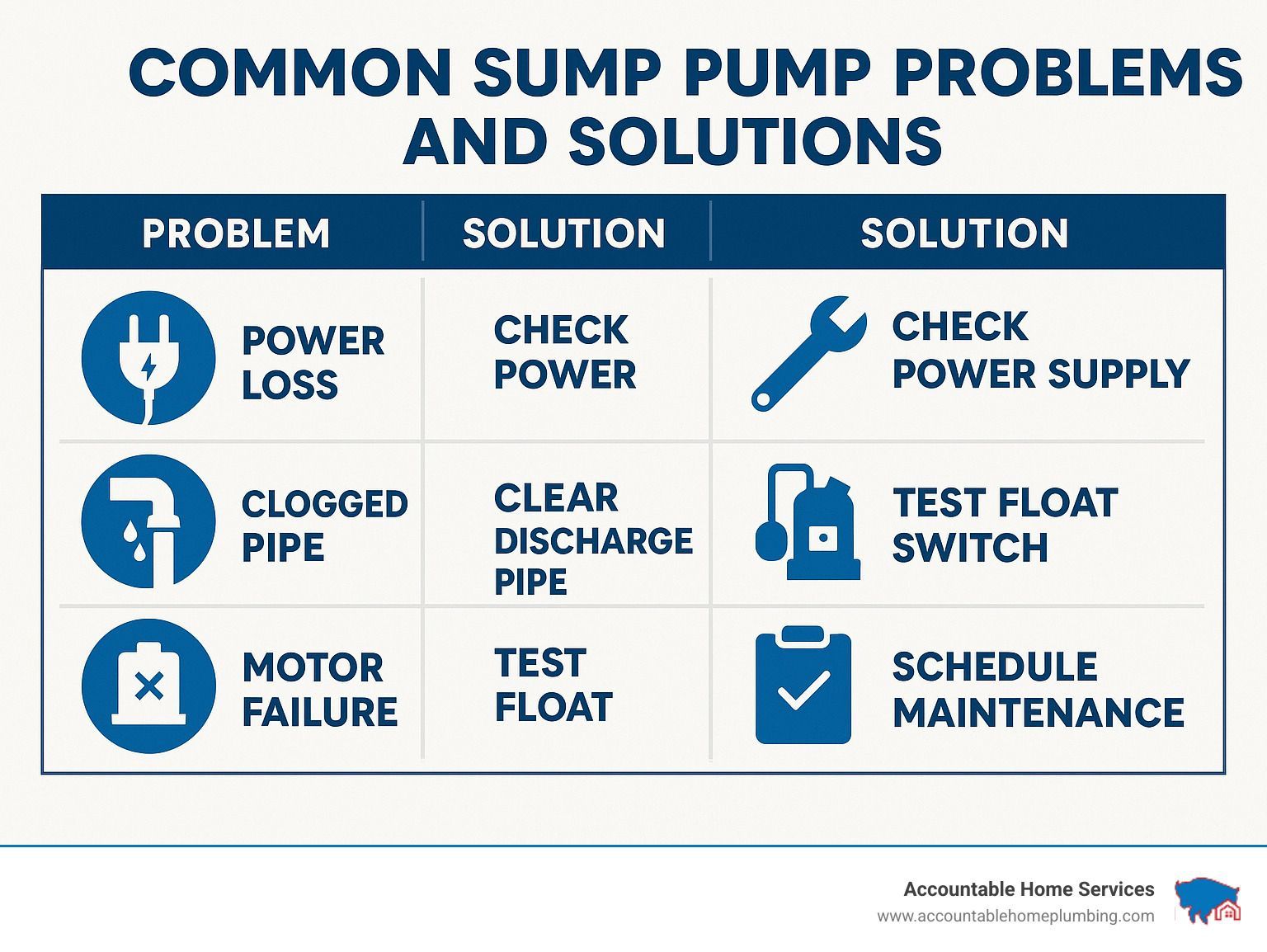
How Your Sump Pump Works & Basic Upkeep
Ever wonder what's actually happening in that mysterious pit in your basement floor? Your sump pump is like a silent guardian, working behind the scenes to keep your home dry and protected. Let's break down this unsung hero's components:
Your sump system starts with a sump pit – that basin installed at the lowest point of your basement where groundwater naturally collects. When water rises in the pit, a float switch (think of it as your pump's "on" button) activates the pump. The impeller then springs into action, drawing water in and pushing it through the discharge pipe that carries water safely away from your foundation. A check valve prevents that water from flowing right back in – a simple but crucial component many homeowners overlook.
"Most Denver homeowners don't realize that sump pumps have a finite lifespan," explains our lead technician. "Even the best units typically last about 7-10 years with proper maintenance. After that, replacement is often more economical than repair."
Submersible pumps operate quietly since they're fully underwater, making them ideal for finished basements where noise might be an issue. Pedestal pumps, with their motors positioned above the water, tend to be louder but more accessible for maintenance and typically last longer.
Here in Colorado, with our spring snowmelts and summer thunderstorms, annual professional service is absolutely essential – ideally before our wet seasons begin. This preventative approach can significantly extend your pump's life and give you peace of mind when severe weather strikes.
Routine Maintenance Tasks
Taking care of your sump pump doesn't require an engineering degree – just some regular attention that can save you thousands in potential water damage.
Your quarterly vinegar rinse might be the simplest yet most effective maintenance task you can perform. Simply unplug your pump and pour a 1:1 solution of white vinegar and water through the system. This dissolves mineral deposits (which we have plenty of in Denver's hard water) and prevents clogs that often lead to pump failure.
Monthly, perform a quick test cycle by pouring enough water into the sump pit to raise the float and activate the pump. This confirms everything is working properly and helps identify issues before they become emergencies.
If you have a battery backup system – which we strongly recommend for our storm-prone Denver customers – test it quarterly and replace the battery every 2-3 years, even if it seems to be working fine. When the power goes out during our notorious summer thunderstorms, you'll be glad you did.
Don't forget to walk the length of your discharge pipe regularly to ensure it's free from blockages. Fall leaves and winter freezing are common culprits in Colorado. While you're at it, test your GFCI outlet monthly by pressing the "test" button to ensure it trips properly, protecting your pump from electrical damage.
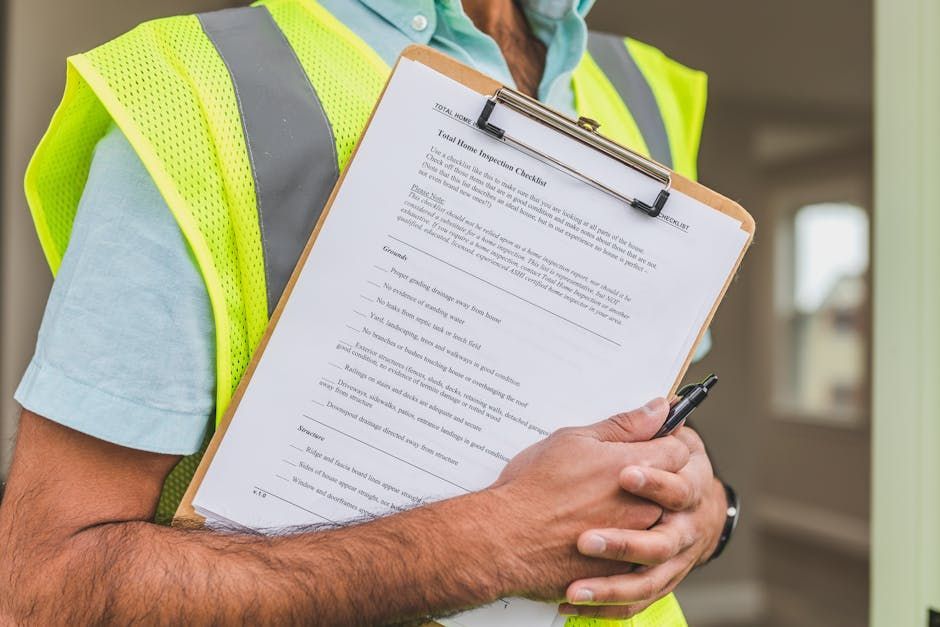
"I've seen so many flooded basements that could have been prevented with just 15 minutes of maintenance every few months," our service manager often tells customers. "The cost of prevention is minimal compared to the expense and heartache of water damage restoration."
The small amount of time you invest in maintaining your sump pump pays enormous dividends in protecting your home's foundation, preventing mold growth, and preserving your peace of mind during heavy rains.
For more comprehensive information about our sump pump and water control services, visit our dedicated service page.
Warning Signs, Causes & Quick Troubleshooting
Is your sump pump trying to tell you something? Like any hardworking appliance, these basement guardians often give warning signs before they fail completely. Catching these early signals can be the difference between a quick fix and a flooded basement nightmare.
Your pump might be in trouble if you notice unusual noises like grinding, rattling, or gurgling sounds coming from the pit. These aren't just annoying – they're often your first clue that bearings are wearing out, the impeller is damaged, or there's air trapped in the system.
Does your pump seem to be working overtime? A unit that's continuously running typically points to a stuck float switch or a pump that's simply overwhelmed by the amount of water it's handling. Either way, this constant operation will burn out your motor prematurely.
"Last spring, I noticed my basement had a distinct musty odor even though it looked dry," shares Tom, a homeowner in Arvada. "When our technician inspected the sump pit, he found the pump was cycling but not keeping up with the underground water seepage. Two days after replacing it, that damp smell completely disappeared."
Visible rust or corrosion on your pump isn't just cosmetic – it's a ticking clock counting down to failure. Similarly, if you notice irregular cycling (turning on and off frequently), your float may need adjustment or your pump might be incorrectly sized for your home's needs.
So what's actually causing these problems? The most common culprits we see throughout Denver include:
Power outages during storms – ironically right when you need your pump the most. Colorado's unpredictable weather makes battery backups not just nice-to-have but essential protection.
Clogged discharge lines filled with dirt, debris, or ice prevent water from exiting properly, forcing your pump to work harder for diminishing returns.
Stuck float switches represent the most common mechanical failure we repair. Usually, debris interference or a too-small pit that constrains the float's movement is to blame.
Improper sizing is something we see frequently in newer homes. An undersized pump works too hard and wears out quickly, while an oversized one cycles too frequently, shortening its lifespan.
During Colorado's frigid winters, frozen discharge outlets can completely block water flow, essentially rendering your pump useless despite it running perfectly.
One Westminster customer learned this lesson the hard way: "I kept hearing my pump turn on every few minutes, even during dry weather. I ignored it until water started seeping into my finished basement. Turns out the float was stuck, causing the pump to run constantly until it burned out—right before a major spring storm."
DIY Red Flags vs Safe Fixes
When your sump pump repair needs arise, knowing what you can safely handle yourself versus when to call a pro can save you time, money, and potential water damage.
Several fixes are perfectly safe for homeowners to tackle. If your pump isn't running, first reset any tripped breakers at your electrical panel – this simple step solves more problems than you might think.
Visible debris in the pit? Carefully clear these obstructions from around the float and pump intake. Speaking of floats, if yours is stuck, gently adjust the float to ensure it moves smoothly through its full range of motion.
During winter, a carefully used hair dryer can thaw frozen discharge hoses (just be extremely cautious mixing electricity and water). And when storms knock out power, knowing how to connect to a generator backup can be a basement-saving skill.
However, certain symptoms should send you reaching for the phone instead of your toolbox. Call us immediately when:
"Many homeowners make the mistake of trying to repair complex electrical components themselves," warns our service technician Mike. "Water and electricity don't mix—when in doubt, call a professional."
You should definitely seek professional help if the motor hums but doesn't pump water, you notice burning smells or smoke, your pump is elderly (more than 7 years old) with multiple issues, water backs up despite the pump running, or the system needs complete replacement.
For emergency sump pump repair situations when minutes matter, our team at Accountable Home Plumbing provides 24/7 service throughout the Denver metro area, arriving with fully-stocked trucks ready to solve your problem on the first visit. Learn more about our emergency repair services.
DIY Sump Pump Repair Checklist
Ready to roll up your sleeves and tackle some sump pump repair yourself? While some issues definitely need a pro, many common problems can be fixed with basic tools and a little know-how. Before you dive in, let's make sure you're prepared:
First, gather your safety gear - this isn't optional when you're dealing with water and electricity! You'll need rubber gloves to protect your hands, safety glasses to shield your eyes, a reliable flashlight (basements can be dark!), and a voltage tester to confirm the power is truly off before you touch anything.
For tools, keep it simple: both flathead and Phillips screwdrivers, a pair of pliers, an adjustable wrench, a bucket to catch any water, a shop vacuum for cleanup, and a garden hose for testing your work when you're done.
"The biggest mistake I see homeowners make is skipping safety steps," says Mike from our team. "Always, always unplug the pump before you start tinkering. And if there's standing water? Make sure you're wearing rubber boots and double-check that all electrical connections are well above the water line."
Before diving into repairs, take a moment to figure out what's actually happening. Is the pump itself acting up, or is it something simpler like a clogged discharge pipe or power issue? You'd be surprised how many emergency calls we get that end up being a tripped breaker or a chunk of debris jamming the float.
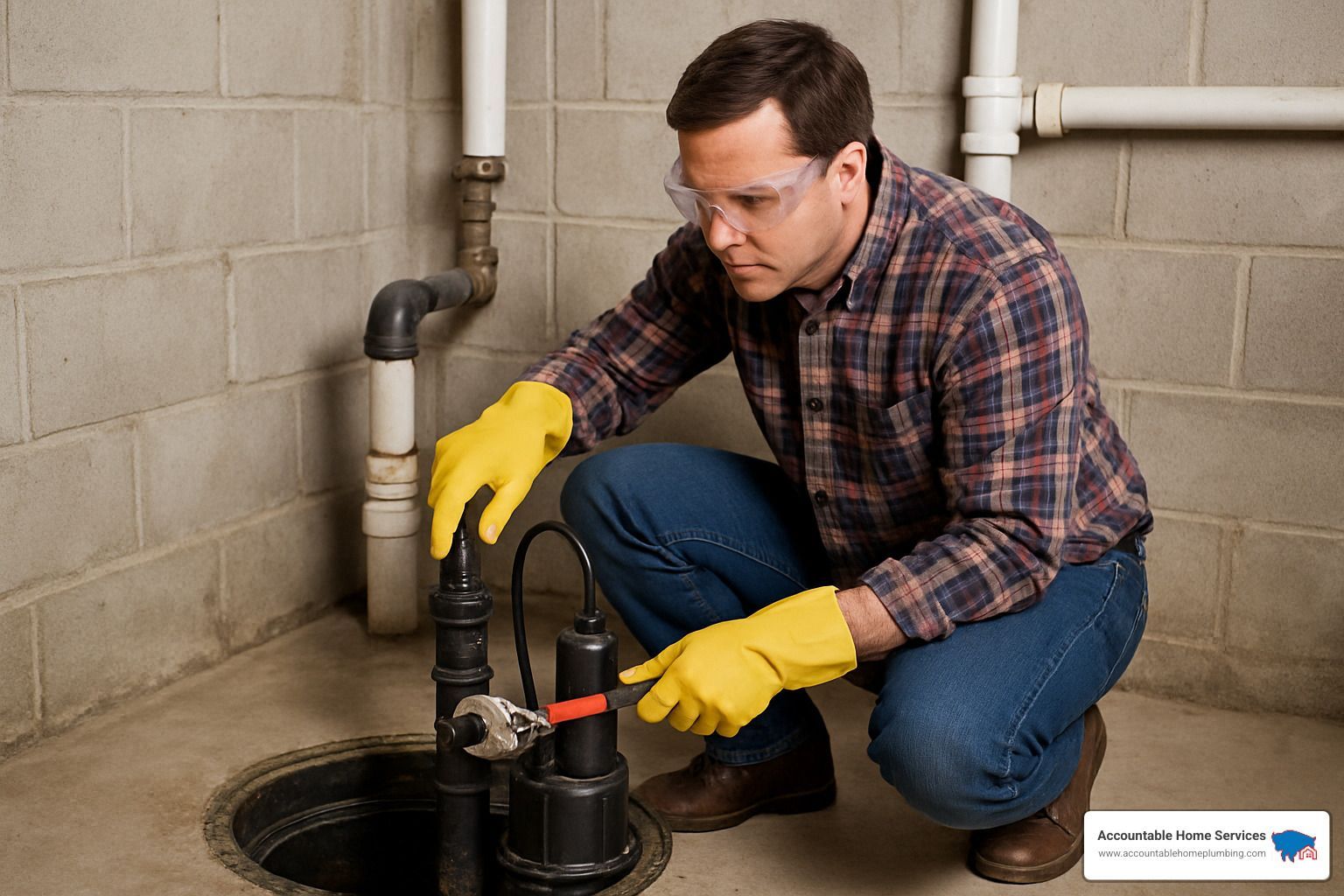
For the hands-on part, there are three common repairs most homeowners can handle:
Cleaning the impeller is often a quick fix - just remove any gunk or debris that's keeping it from spinning freely. If water's flowing back into your pit after the pump shuts off, you probably need to replace the check valve. And those damp spots around connections? That's usually a sign you need new gaskets or some plumber's tape to create a proper seal.
"I always tell folks that maintaining your sump pump is just like changing the oil in your car," our lead technician often reminds customers. "Skip it, and eventually you'll be shopping for a replacement instead of just doing a simple repair."
Want more detailed maintenance tips? Visit The Home Depot's blog for additional guidance on keeping your system running smoothly.
Step-by-Step Sump Pump Repair for a Stuck Float
A stubborn float switch is one of the most common sump pump repair issues we see in Denver homes. Here's how you can fix it yourself:
Safety first - unplug the pump completely before you start. Then carefully remove the entire pump from the pit and place it somewhere clean where you can work on it properly.
Take a good look at the float mechanism. It should move up and down without any resistance. If it's sticking, you'll likely find debris, mineral buildup, or slime interfering with its movement. A simple cleaning with equal parts vinegar and water will often do the trick - just use a soft brush to scrub away the gunk.
While you're at it, check for any mechanical problems like bent rods or damaged pivot points. These parts might need replacing if they're too far gone. Many homeowners find that adding a float guard helps prevent future problems by keeping debris away from this critical componen
After everything's clean and moving freely, reinstall the pump and test it by adding water to the pit. Watch it complete a full cycle to make sure the float rises and falls as it should.
One of our customers in Arvada shared a valuable lesson: "My basement flooded twice before I figured out the float was catching on the pit wall. Just a simple adjustment and regular cleaning has kept everything bone-dry for three years now."
Step-by-Step Sump Pump Repair for a Frozen Discharge Line
Colorado winters can be brutal on your sump system. Frozen discharge lines are a common sump pump repair headache when temperatures plummet, but here's how to handle them:
First, find the frozen section by feeling along the discharge pipe for unusually cold spots. Once located, thaw it carefully using a hair dryer, a heat gun on its lowest setting, or warm towels wrapped around the pipe. Please - never use open flames or torches, as they can damage the pipe or even cause fires.
But fixing it once isn't enough - you need to prevent it from happening again. Consider installing heat tape along vulnerable sections of the pipe, especially those exposed to outdoor temperatures. Adding insulation sleeves to exterior portions also provides excellent protection against freezing.
Some homeowners benefit from modifying their discharge configuration to improve drainage and prevent water from standing in the pipe. For persistent problems, consider specialized freeze-resistant discharge lines designed specifically for cold climates like ours.
Another smart option is installing a "water genie" or similar device that allows water to exit while preventing frigid air from entering the pipe.
"We had a customer in Boulder who called us three winters in a row with frozen lines," our technician remembers with a smile. "After we installed heat tape and proper insulation, they haven't had a single problem since - even during those negative-degree cold snaps we get in January."
If you're ever unsure about a repair or if the problem seems beyond your comfort level, our team at Accountable Home Plumbing is just a phone call away. Sometimes the smartest DIY decision is knowing when to call a pro!
When to Call a Pro, Costs & Future-Proof Upgrades
While DIY maintenance and simple repairs can extend your sump pump's life, some situations call for professional expertise. Knowing when to grab your toolbox and when to grab your phone can save you time, money, and potential water damage.
Call a Professional When:
Your sump pump has served faithfully for 7-10 years (they don't live forever!), the motor sounds like it's auditioning for a rock band, you've fixed the same issue three times this month, your basement is wet despite the pump running, or you're staring at electrical components wondering which wire does what. These are all clear signals it's time for expert help.
"There's an important distinction between plumbers and waterproofing contractors," explains our service manager. "While both can handle basic sump pump repair, waterproofing specialists often provide more comprehensive solutions for homes with serious water intrusion issues."
When choosing someone to trust with your basement's flood defense system, look for proper licensing and insurance (always!), specific experience with sump systems (not just general plumbing), honest reviews from real customers, transparent pricing without surprise fees, availability when disasters strike (usually at 2 AM during the worst storm of the year), and solid warranties on both parts and labor.
At Accountable Home Plumbing, we pride ourselves on meeting all these criteria while serving the Denver metro area. Contact us for a consultation or emergency service.
Average Sump Pump Repair Costs by Problem
Understanding potential costs helps you budget appropriately for sump pump repair. Here's what Denver homeowners typically pay:
A problematic float switch (the part that tells your pump when to turn on) usually costs between $75-$150 to replace. Check valve issues run about $45-$90 to fix. If your motor needs repair or replacement, expect to pay $300-$600 – this is where things get serious. Discharge pipe repairs typically range from $100-$250, while a complete pump replacement might cost anywhere from $500-$1,200. Adding a battery backup system – which I strongly recommend for Colorado's unpredictable power situations – runs $300-$800.
In the Denver area, most professionals charge between $75-$150 per hour, with typical repairs taking 1-3 hours to complete.
"The average cost to repair a well pump is $950, with most repairs ranging between $100 and $2,900," according to industry statistics. However, sump pump repairs tend to be on the lower end of this range unless a complete replacement is needed.
Replace vs Repair Decision Matrix
Sometimes, replacement makes more economic sense than repair. Consider these factors when making your decision:
Lean Toward Repair when your pump is relatively young (under 5 years), the problem is isolated to one component, fixing it costs less than half of a new unit, your current pump size matches your needs, and it doesn't have a history of breaking down regularly.
Consider Replacement when your faithful pump has reached the 7+ year mark, you've had multiple service calls within a year, you spot visible corrosion (that rusty color is never a good sign), your basement needs have changed (perhaps you've finished it or noticed more water infiltration), repairs would cost more than half of a new unit, or you're interested in newer energy-efficient models with smart features.
"One factor many homeowners overlook is the advancement in pump technology," notes our technician. "Newer models are often more energy-efficient, quieter, and offer smart features like remote monitoring—worth considering even if repair is possible."
For Denver residents dealing with our unique freeze-thaw cycles and sudden snowmelt issues, we recommend systems specifically designed for our region's challenges. They might cost a bit more upfront, but the peace of mind during spring runoff is priceless. Check if we service your area.
Conclusion
A dry basement isn't just about avoiding water damage—it's about protecting your home's foundation, preventing mold growth, and giving you that precious peace of mind when Colorado weather does what it does best: surprise you.
I've seen how understanding your sump pump system, staying on top of maintenance, and knowing when to call for help can transform anxious homeowners into confident ones who rarely think about basement flooding again.
Here's what I tell all my Denver customers: prevention is cheaper than repair. Those few minutes you spend each season checking your pump will save you thousands in potential water damage. The math is simple, but the peace of mind is priceless.
Getting to know your system makes all the difference. Is it submersible or pedestal? How old is it? When was the last time anyone looked at it? These aren't just technical questions—they're your first line of defense against basement flooding.
Trust what your senses tell you. That strange gurgling noise? The musty smell that wasn't there last week? Your pump trying to tell you something needs attention. In my years servicing Denver homes, I've found that homeowners who listen to these early warning signs avoid the 2 AM emergency calls.
Sump pump repair is important, but having a backup plan is essential in our unpredictable Colorado climate. Whether it's a battery backup that kicks in during power outages or a water-powered secondary pump, redundancy isn't excessive—it's smart homeownership.
Finding a professional you trust matters more than you might think. At Accountable Home Plumbing, we've built our reputation on being there when Denver homeowners need us most—especially during those middle-of-the-night storms when pumps seem to know exactly the worst time to quit.
Our upfront pricing policy means no surprises on your bill, and our 24/7 emergency response ensures someone's always ready to help. As I often tell my customers, "The best sump pump is one you never have to think about." With proper care and the right professional support, that worry-free basement is absolutely within reach.
For reliable sump pump installation, maintenance, and sump pump repair services throughout Broomfield, Westminster, Thornton, Northglenn, Arvada, Boulder, Denver, and Longmont, contact Accountable Home Plumbing today.
Your dry basement and worry-free future are just a phone call away.

